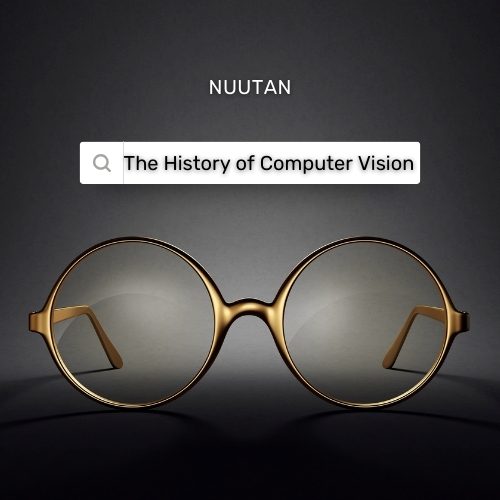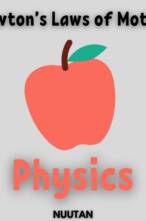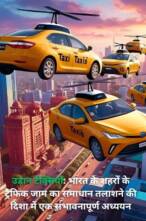OUTLINE:
History of Computer Vision: Outlined below are the headings that provide a comprehensive structure for the article, delving into the origins, evolution, practical applications, and ethical implications of computer vision. This article will encompass the following areas:
(1) An Introduction to Computer Vision;
(2) Tracing the Roots of Computer Vision;
(3) Significant Breakthroughs in Computer Vision Research;
(4) Practical Applications of Computer Vision;
(5) Advancements in Machine Learning and Computer Vision;
(6) Current Challenges and Future Directions in Computer Vision;
(7) Impacts of Computer Vision in Various Industries;
(8) Ethical Considerations in the Field of Computer Vision;
(9) Real-World Case Studies Demonstrating Computer Vision Applications; and
(10) Summarizing the Development and Prospects of Computer Vision.
DETAILS:
(1) An Introduction to Computer Vision:
Computer vision is an exciting and rapidly advancing field that focuses on equipping computers with the ability to comprehend and interpret visual information, mirroring human visual perception. It involves the development of algorithms and techniques that empower machines to analyse, process, and derive meaningful insights from images and videos.
At its core, computer vision strives to narrow the divide between the digital and visual realms by enabling computers to “see” and comprehend visual data. While human vision is a complex process involving the eyes, brain, and cognitive abilities, computer vision seeks to replicate this functionality through computational methods.
The primary objective of computer vision is to enable machines to perceive and comprehend visual content, encompassing a wide array of tasks. These tasks include object recognition, where machines identify and classify objects in images or videos; image segmentation, which involves dividing an image into meaningful regions; and motion tracking, which entails monitoring the movement of objects.
To accomplish these tasks, computer vision leverages techniques from diverse fields such as image processing, pattern recognition, and machine learning. Image processing techniques enhance and manipulate images to extract valuable information, while pattern recognition techniques aid in identifying patterns or features within images and videos. Machine learning algorithms, particularly deep learning, have revolutionised computer vision by enabling computers to learn from extensive datasets and make accurate predictions.
The applications of computer vision are extensive and varied. It finds use in healthcare for medical image analysis, self-driving cars for object detection and pedestrian tracking, surveillance systems for security monitoring, and augmented reality for overlaying digital information onto the real world, among numerous other domains.
As computer vision continues to advance, it unlocks exciting possibilities for the future. It has the potential to revolutionise industries, enhance automation, improve human-computer interaction, and enable novel visual-based technologies.
In conclusion, the introduction to computer vision provides a foundational understanding of the field. It elucidates how computer vision strives to empower machines to comprehend visual information, the tasks it can undertake, the techniques it employs, and its wide-ranging applications across various industries. By bridging the gap between the digital and visual realms, computer vision is reshaping how we interact with and comprehend visual data.
(2) Tracing the Roots of Computer Vision:
The field of computer vision has a rich and influential history, characterised by pioneering efforts and ground-breaking developments that have formed the basis for today’s advancements. In this section, we will delve into the early stages of computer vision, highlighting key individuals who made significant contributions to its development.
The exploration of teaching computers to “see” and comprehend visual information began in the 1950s and 1960s, marking a crucial milestone in computer vision. During this era, several visionaries emerged and left indelible marks on the field.
Among these pioneers is David Marr, a British neuroscientist and computer vision researcher. Marr introduced the concept of analysing visual information at various levels of abstraction, laying the foundation for understanding how humans process visual data. His work served as an inspiration for the development of algorithms for image understanding.
Another influential figure in the early days of computer vision is Takeo Kanade, a Japanese computer scientist. Kanade made noteworthy contributions to computer vision research, particularly in the areas of image understanding, face recognition, and tracking. His work played a crucial role in advancing the field and contributing to the development of sophisticated computer vision algorithms and techniques.
In addition to individual contributions, notable institutions and organisations also played pivotal roles in the early development of computer vision. The Massachusetts Institute of Technology (MIT) stands out as one such institution, where researchers like Marvin Minsky and Seymour Papert made significant contributions to computer vision research. Their exploration of concepts such as pattern recognition, image analysis, and machine learning laid the groundwork for subsequent advancements.
During this period, computer vision research primarily focused on low-level image processing tasks such as edge detection and feature extraction. These early developments formed the basis for the evolution of computer vision into a multidisciplinary field encompassing mathematics, physics, computer science, and neuroscience.
The pioneering work of these individuals and institutions paved the way for subsequent breakthroughs in computer vision. Their research ignited interest and inspired generations of researchers to push the boundaries of computer vision further. Even today, their contributions continue to shape the development of state-of-the-art computer vision algorithms and applications.
In conclusion, the early developments and contributions of pioneers in computer vision played a pivotal role in shaping the field and establishing the foundation for subsequent advancements. Their work introduced fundamental concepts, techniques, and ideas that continue to drive research and innovation in computer vision. By acknowledging their contributions, we gain a profound appreciation for the evolution and progress of this fascinating field.
(3) Significant Breakthroughs in Computer Vision Research:
Several major landmarks in the history of computer vision denote watershed moments when the field made significant strides forward. Major advances in our understanding of computer vision will be discussed below.
One of the earliest achievements in computer vision studies was the creation of methods for extracting features from images and describing them. Image elements such as borders, corners, and textures have been the focus of algorithm development by researchers. Later, picture analysis and recognition jobs relied on these characteristics.
(3.1) Object Recognition:
One of the cornerstones of computer vision is the ability to detect and categorise visual content. The development of algorithms able to automatically detect and identify things in photographs marked a major advancement in the field of object recognition. Face recognition, object tracking, and scene understanding are just some of the uses that have been made possible by this development.
The process of segmenting an image into meaningful parts is essential in many applications of computer vision. The creation of edge detection, region-based segmentation, and contour extraction techniques are landmarks in this field. Applications such as picture manipulation, medical imaging, and scene analysis are made possible by these methods.
Important advances in computer vision research have been made in the fields of 3D reconstruction and depth estimation from 2D images. In order to create 3D representations of objects and scenes, researchers came up with methods to estimate depth information from a single image or a series of photographs. This landmark influenced numerous fields, including computer graphics, augmented reality, and robotics.
(3.2) Use of deep learning and CNNs to solve complex problems:
When deep learning and convolutional neural networks (CNNs) were first introduced, it was a watershed moment in the field of computer vision. When it comes to tasks like picture classification, object detection, and semantic segmentation, deep learning systems have shown excellent performance. The advent of convolutional neural networks (CNNs) brought revolutionary gains in accuracy and robustness by automatically learning hierarchical representations from massive datasets.
(3.3) Problems with Large Datasets and Establishing Benchmarks:
Large-scale datasets and benchmark competitions were developed by researchers to aid in the advancement and assessment of computer vision algorithms. In order to train and evaluate computer vision models, large collections of labelled images were made available through datasets like ImageNet and COCO. These benchmarks allowed for more reliable comparisons, sped up the pace of research, and inspired the creation of novel algorithm designs.
(3.4) Live and Built-in Eyes:
Real-time and embedded vision systems were a significant step forward in computer vision research. Computer vision applications are now feasible in fields like robotics, autonomous cars, and mobile devices because of the development of algorithms and architectures capable of effectively processing visual data in real time.
Recent advances in computer vision research have led to the creation of generative models, such as generative adversarial networks (GANs) that can synthesise realistic images and alter visual content. Image synthesis, style transfer, and data augmenting are just some of the domains where these models might be useful.
Collectively, these landmarks form the landscape of computer vision research and enable myriad applications in other domains. Feature extraction, object recognition, image segmentation, 3D reconstruction, deep learning, and real-time processing are just a few of the areas that have seen substantial progress. Recognising these landmarks sheds light on computer vision’s historic development and promising future.
(4) Practical Applications of Computer Vision:
The advent of computer vision has reshaped many fields and the way we experience the world. In this article, we’ll look at a few of the most important areas where advances in computer vision have been very helpful.
When it comes to analysing medical pictures like X-rays, MRIs, and CT scans, computer vision plays a crucial role in healthcare. Computer vision algorithms help medical professionals make sense of these photos by spotting anomalies at a glance and providing context for a more precise diagnosis.
Computer vision is essential to the progress of self-driving cars. Computer vision algorithms allow cameras and sensors to give vehicles a sense of their surroundings. Safer movement and judgement are made possible because of their ability to recognise and follow moving targets like humans, automobiles, and traffic signs.
The security and surveillance industries have been revolutionised by computer vision. Computer vision algorithms can analyse video streams for suspicious behaviour, identify faces, and follow moving objects. Access control, object tracking, and crowd monitoring are just some of the ways that this technology is being utilised to improve safety in a variety of settings.
Significant improvements have been made in the retail and e-commerce sectors as a result of the use of computer vision. Customers may now search for items using photographs, which is a much more convenient and enjoyable way to shop. Furthermore, augmented reality apps for virtual try-ons and product visualisation are made possible by computer vision algorithms, and customer behaviour may be analysed.
Computer vision also plays an important role in quality control and industrial automation. It makes it possible to inspect products on production lines for flaws and quality control. Computer vision also helps in guiding robots, identifying objects, and performing other robotic warehouse duties like picking and sorting.
Computer vision is an essential component of both augmented and virtual reality (AR and VR) experiences. Computer vision provides features like virtual object placement, gesture detection, and facial tracking by monitoring the physical world and superimposing digital data. This improves use in media, education, and visualisation.
Computer vision has useful uses in the agricultural and culinary sectors. It can analyse photographs from drones or sensors and help farmers keep an eye on their crops, find signs of disease, and predict how much they’ll harvest. Computer vision is used in the food sector for quality control checks, product classification, and automated grading.
In both robotics and industrial vision systems, computer vision plays a crucial role. Robots can now do tasks like object recognition, grasping, and navigation thanks to this advancement in perception and interaction. Computer vision is at the heart of industrial vision systems, which monitor and control production processes, examine products, and guarantee quality.
These use cases show how pervasive computer vision has become in a variety of fields. Computer vision technology has revolutionised the way we interact with the world by improving automation, decision-making, safety, and efficiency through the use of visual information and complex algorithms.
(5) Advancements in Machine Learning and Computer Vision:
Machine learning, especially deep learning, has changed the way computer vision has moved forward in a big way. In this part, we’ll look at the most important changes in machine learning and how they affect computer vision.
(5.1) (CNNs):
Deep convolutional neural networks (CNNs) are one of the most important steps forward in machine learning and computer vision. CNNs have changed how jobs like classifying images, finding objects, and separating meaning from images are done. They instantly learn hierarchical representations of images, capturing both low-level and high-level features, which makes them much more accurate and better at what they do.
(5.2) Transfer Learning and Pre-trained Models:
In computer vision, transfer learning has become a powerful method. With transfer learning, models that have already been trained on big datasets like ImageNet can be fine-tuned for specific tasks or domains where there isn’t a lot of labelled data. This method makes it possible to build models faster, make them more general, and make better use of the resources that are available.
(5.3) Generative Adversarial Networks (GANs):
GANs have come a long way in making realistic pictures, and they are used in computer vision. GANs can create new images by learning from existing datasets. This lets them do things like create new images, move styles, and add to existing data. GANs have opened the door to creative uses, artistic changes, and virtual worlds that look and feel real.
(5.4) Object Detection and Tracking:
Advances in machine learning have made it much easier for computer vision to find and follow objects. Techniques like region-based CNNs (R-CNN), Faster R-CNN, and You Only Look Once (YOLO) have made it possible to find and locate things in images or videos with a high level of accuracy and speed. These improvements have been used in things like self-driving cars, spying systems, and robots.
(5.5) Image Segmentation and Instance Segmentation:
The use of machine learning has made image segmentation jobs much easier. Algorithms like Fully Convolutional Networks (FCNs) and Mask R-CNN make it possible to segment a picture down to the pixel level and tell the difference between different objects or areas. Instance segmentation goes even further by making it possible to tell each instance of an item apart. This makes it possible to understand and analyse visual scenes in more detail.
(5.6) Video Understanding and Action Recognition:
Machine learning has helped video understanding and action recognition make huge leaps forward. Models of temporal relationships in videos have been made using Recurrent Neural Networks (RNNs) and long-short-term memory (LSTM) networks. This makes it possible to do things like recognise actions, caption videos, and summarise videos.
(5.7) Weakly Supervised and Unsupervised Learning:
As machine learning has improved, weakly supervised and unsupervised learning methods in computer vision have been studied. Weakly supervised learning is a way to train models with restricted or noisy labels instead of a lot of labels. Unsupervised learning methods, like clustering and generative models, use unlabelled data to find patterns and structures that can be used in new ways and lead to new ideas and applications.
(5.8) Efficient Model Architectures and Hardware Acceleration:
As algorithms have gotten better, machine learning research has focused on making better model architectures and ways to speed up hardware. Mobile devices and embedded systems have limited resources, so models like MobileNet, EfficientNet, and Neural Architecture Search (NAS) have been made for them. Computer vision systems have become faster and more efficient thanks to techniques like specialised chips (like GPUs and TPUs) and model compression.
Because of these improvements in machine learning, computer vision has reached new heights. It can now be used in many different ways and is more accurate and faster than ever before. Deep learning, transfer learning, GANs, and efficient model architectures have changed the field of computer vision, making it more approachable, robust, and able to deal with real-world problems.
(6) Current Challenges and Future Directions in Computer Vision:
In recent years, computer vision has made a lot of progress, but there are still some problems that experts are working to solve. Also, there are exciting ways the field could go in the future that hold a lot of potential. In this part, we’ll talk about some of the most important problems and ideas for the future of computer vision.
(6.1) Robustness to Changes and Attacks from the Opponent:
One of the biggest problems in computer vision is making systems that can handle changes in lighting, viewpoints, occlusions, and other things. Another problem is adversarial attacks, in which small changes are made to pictures to trick algorithms. A future study will try to make algorithms that can handle these kinds of changes and attacks well.
(6.2) AI that can be understood and explained:
As computer vision systems get more complicated and advanced, there is a growing need for AI that can be understood and explained. It’s important to understand how these systems make choices and explain them to users or other stakeholders, especially in critical applications like healthcare and self-driving cars. Future studies will focus on making models and techniques that can explain why computer vision algorithms make the decisions they do in a way that is clear and easy to understand.
(6.3) Privacy and Ethics:
Computer vision technology raises important questions about privacy and ethics. When a lot of visual data is collected and analysed, it raises questions about permission, who owns the data, and how it could be used. Future studies will try to solve these problems by coming up with ways to protect people’s privacy, building ethical frameworks into computer vision algorithms, and encouraging responsible and open behaviour.
(6.4) Generalisation and Transfer Learning:
Deep learning has done very well on some datasets, but we need algorithms that can work well in many different areas, datasets, and situations. Transfer learning methods have shown promise in adapting to new tasks by using information from previous training, but more work needs to be done to improve generalisation and reduce the need for large labelled datasets.
(6.5) Active learning and data efficiency:
It can take a lot of time and money to label training data. Future research in computer vision will focus on making active learning methods that intelligently choose useful samples for labelling, making it easier to label. Improving the data economy will also require algorithms that can learn well from a small amount of labelled data or use unlabelled data through unsupervised or semi-supervised learning.
(6.6) Multimodal and Cross-Modal Understanding:
There is a lot that can be done to improve computer vision by combining multiple sensory modes, such as vision, language, and sound. In the future, scientists will look into techniques for multimodal understanding, which would let computers analyse and reason about input from different modalities at the same time. This will be useful in areas like video captions, answering questions visually, and how people and computers talk to each other.
(6.7) Real-Time and Edge Computing:
As the need for real-time computer vision applications in areas like robotics, self-driving cars, and augmented reality grows, efficient algorithms that can work in settings with limited resources are needed. Future research will focus on making computer vision work in real time on low-power devices by creating lightweight models, efficient inference methods, and edge computing solutions.
(6.8) Lifelong learning and continuous adaptation:
It would be nice for computer vision systems to keep learning and changing as their surroundings and ideas change. Lifelong learning is meant to help models learn more over time, remember what they’ve learned, and quickly adjust to new jobs or situations. In the future, researchers will look into methods for lifelong learning to make computer vision systems more adaptable and flexible.
These problems and ideas for the future show how much study is still going on and how exciting the future of computer vision could be. By tackling these problems and looking into these areas, we can expect computer vision to keep moving forward, leading to more accurate, reliable, and smart visual understanding systems that have a big impact on many fields and industries.
(7) Impacts of Computer Vision in Various Industries:
Computer vision technology has had a big effect on many industries, changing processes, making them more efficient, and opening the door to new uses. In this part, we’ll talk about how computer vision has changed different fields.
(7.1) Healthcare:
Computer vision has changed healthcare by making it easier to analyse medical images, find diseases, and diagnose them. It helps doctors understand medical images like X-rays, MRIs, and CT scans, which leads to more accurate evaluations and plans for treatment. Computer vision algorithms can find unusual things, recognise trends, and help find diseases like cancer early on. It is also a key part of robot-assisted surgeries, making them more precise and lowering risks.
(7.2) Auto:
Computer vision is a big part of how self-driving cars are getting better and better. It lets vehicles see and understand what’s going on around them, so they can find and follow things like people, other cars, and traffic signs. Computer vision algorithms look at data from cameras and other sensors to help self-driving cars make good choices and move around safely. This technology could make transportation safer, more efficient, and easier for more people to use.
(7.3) Retail and E-commerce:
New uses made possible by computer vision have changed the retail and e-commerce industries. Customers can use images to look for goods with visual search, which makes shopping more fun. Algorithms for computer vision look at how customers act and use that information to make personalised tips and show ads to the right people. Augmented reality (AR) technology, which is powered by computer vision, lets customers actually try on clothes or see how furniture would look in their homes. This improves the shopping experience as a whole.
(7.4) Manufacturing and Quality Control:
Computer vision is a key part of the process of making things and making sure they are good. It lets goods on assembly lines be checked automatically for flaws or deviations from quality standards. Computer vision systems can find flaws, measure sizes, and ensure the quality of a product. This technology makes electronics, cars, and consumer goods more efficient, cuts down on mistakes, and improves the general quality of their products.
(7.5) Security and Surveillance:
The way security and surveillance systems work has changed because of computer vision. It enables intelligent video analytics, which make it possible to watch, find, and track objects in real time. Algorithms for computer vision can find and identify faces, licence plates, and suspicious behaviour, which make public spaces, airports, and key infrastructure safer. It helps stop crime, keep an eye on crowds, and control entry, making the area safer and more secure overall.
(7.6) Agriculture:
Computer vision technology has been used in farming to make it more productive and long-lasting. It lets drones or satellites take pictures of crops from above and analyse them to find diseases and estimate food yields. Algorithms that use computer vision can find pests, diseases, and missing nutrients. This lets farmers move quickly and improve crop health. This technology also helps farmers get the most out of their resources and be less harmful to the earth.
(7.7) Entertainment and Media:
Computer vision has changed the entertainment and media business by making it easier to create immersive experiences and materials. It runs applications for augmented reality (AR) and virtual reality (VR), which let users interact with digital material in the real world. Algorithms for computer vision can track facial emotions, gestures, and movements, which makes games and virtual simulations more fun. Computer vision is used in the film and animation industries to make realistic visual effects and track objects.
(7.8) Security and Authentication:
Computer vision is used in security and authentication systems to make it easier to check someone’s identity and control access. Face recognition algorithms can tell who a person is by looking at their face. This makes safe authentication possible and prevents unauthorised access. It can be used in airports, banks, and smart devices to make them safer and easier to use.
These examples show how computer vision is changing many different businesses in different ways. Computer vision technology improves efficiency, accuracy, and decision-making by using visual information and advanced algorithms. This drives innovation and changes how businesses work.
(8) Ethical Considerations in the Field of Computer Vision:
As computer vision technology improves and spreads, it brings up important social questions that need to be answered. These things have to do with privacy, fairness, responsibility, and the possible effects on people and on society as a whole. In this part, we’ll talk about the most important ethical issues in computer vision.
(8.1) Privacy:
Computer vision systems often collect and analyse a lot of visual data, like pictures and movies, which can be a privacy risk. When it comes to how this data is gathered, stored, and used, privacy is an ethical issue that needs to be thought about. It is important to make sure that people’s right to privacy is protected and that data is handled in a safe and responsible way. To protect people’s privacy, safeguards like informed consent, anonymizing data, and keeping the amount of data to a minimum should be put in place.
(8.2) Bias and Fairness:
It is possible for computer vision programmes to be biased, which can lead to unfair results. Bias can come from both the data that is used to teach the algorithms and the way the algorithms are made and used. It is important to deal with biases based on race, gender, age, and other protected characteristics to make sure computer vision systems are fair and equal. Careful choice of training data, representation that is diverse and includes everyone, and on-going evaluation and monitoring can help reduce bias and support fairness.
(8.3) Accountability and openness:
Computer vision systems should be held responsible for what they decide and do. It’s important to make sure that these systems are open about how they work so that users and stakeholders can understand the algorithms they use and why they make the choices they do. Explain-ability methods can be used to learn more about how computer vision systems decide what to do. To deal with problems and make sure computer vision technology is used in an ethical way, it is important to set up clear lines of responsibility, accountability, and redress.
(8.4) Approval and Control:
People should be able to decide how their visual data is used, and they should be able to give informed approval. Consent methods should be clear and easy to understand so that people know how their data will be used and can make smart decisions. People should be able to opt out, see, fix, and delete their own data if they want to. Giving people control over their own data gives them power and respect their independence.
(8.5) Possibility of Misuse:
Like any powerful tool, computer vision technology has the chance of being used in the wrong way or having effects that were not intended. It is important to think about the risks and harm that could happen if computer vision systems are used in the wrong way. Steps should be taken to make sure that computer vision technology isn’t used for bad things like spying on people without a good reason, being biased, or violating people’s rights. Risks of misuse can be cut down with regular audits, legal frameworks, and ethical standards.
(8.6) Impact on Society and Fairness:
Computer vision technology should be made and used in a way that takes into account its effects on society as a whole and supports fairness. It is important to make sure that everyone can use the benefits of computer vision and that it doesn’t make social differences worse. The goals of research and development should be to solve problems in society and meet the wants of different groups.
(8.7) Regulation and Governance:
Ethical concerns in computer vision make it necessary to make the right rules and models for governance. These models should be used to make sure that computer vision technology is developed, deployed, and used in a responsible way. To make sure that computer vision systems are used in an ethical way, researchers, business stakeholders, policymakers, and ethicists must work together to set ethical standards, guidelines, and oversight mechanisms.
It’s important to think about these ethical issues if you want to build public trust, encourage responsible innovation, and get the most good out of computer vision technology. By incorporating ethical principles into the design, development, and use of computer vision systems, we can make sure that this technology is used in a way that is moral, respects the rights of people, and helps society as a whole.
(9) Real-World Case Studies Demonstrating Computer Vision Applications:
Numerous industries have found practical uses for computer vision technology, which has resulted in revolutionary new procedures and opportunities. Here, we’ll look at a few interesting case studies that show off the real-world benefits of using computer vision.
Building fully autonomous automobiles is one of the most visible uses of computer vision technology. Vehicles like Tesla, Waymo, and Uber all feature built-in computer vision systems that allow them to better observe and interpret their environments. In order to recognise and follow moving things like people, cars, and road signs, computer vision algorithms analyse data from cameras and other sensors. This paves the way for self-driving cars to make educated decisions and travel in a risk-free environment.
Computer vision has produced important advancements in the medical field. In radiology, for instance, computer vision algorithms aid in the interpretation of diagnostic imaging data from X-rays, MRIs, and CT scans. They aid in the identification of diseases like cancer by picking up on irregularities and patterns otherwise missed. Computer vision technology also helps in robot-assisted operations by giving surgeons clear visual cues on what they should be doing. These tools improve precision, productivity, and the health of patients.
Computer vision has revolutionised the retail and e-commerce industries. Visual search is a particularly useful implementation since it allows consumers to find what they’re looking for without having to type anything. This innovation enables shoppers to snap a photo of an item and instantly locate alternatives. Using the image’s visual characteristics, computer vision algorithms can find similar products in a database. This improves the whole shopping experience and makes it simpler for customers to locate the products they need.
Computer vision is an integral part of quality control procedures in the industrial sector. Manufacturers can speed up quality control on production lines by implementing computer vision systems for automated product inspection. Defects, deviations from quality standards, or missing components can all be spotted by computer vision algorithms by analysing photos or videos of products. As a result, problems may be spotted before they become widespread, and only high-quality items make it to market, both of which help to minimise waste and boost product quality.
Computer vision has changed the way security and surveillance systems work forever. Video feeds can be monitored and analysed in real time using cutting-edge video analytics enabled by computer vision technology. These systems are capable of finding and following things, recognising faces, and spotting suspicious behaviour. Public areas, airports, and other essential infrastructure frequently employ such apps to bolster security and forestall attacks.
In the agricultural sector, computer vision technology has proven to be quite useful. Some applications include crop analysis and the identification of diseases. Images of crops taken from above by drones fitted with cameras are processed by computer vision algorithms. These algorithms can detect nutrient deficits, pests, and plant diseases, empowering farmers to take preventative measures and achieve optimal crop health. Computer vision helps precision agriculture by revealing information about the state of crops, which increases output and decreases waste.
Computer vision is a foundational technology for augmented and virtual reality (AR/VR) experiences. Whereas augmented reality (AR) superimposes digital data onto the physical world, virtual reality (VR) creates fully immersive digital worlds. Tracking and analysing human motion, gestures, and facial expressions with the use of computer vision algorithms paves the way for engaging and lifelike simulations. Games, training simulations, and virtual tours are just some of the many fields that could benefit from these innovations.
These examples show how computer vision is being used in a wide variety of sectors, with significant effects. Computer vision technology automates processes, improves decision-making, and introduces novel opportunities in many different industries, including transportation, healthcare, retail, manufacturing, security, agriculture, and entertainment, by employing advanced algorithms and visual data processing.
(10) Summarising the Development and Prospects of Computer Vision:
Since it was first made, computer vision has come a long way. Its growth has been nothing short of amazing. From the first experiments in the 1960s to today’s advanced deep learning algorithms, computer vision technology has come a long way. It has changed many businesses and changed how we interact with the world.
(10.1) How Computer Vision Has Changed:
In its early days, computer vision was mostly used for simple jobs like finding edges and recognising objects. Progress was slowed by a lack of computer power and data, but researchers laid the groundwork for future improvements. In the 1980s and 1990s, a lot of success was achieved by making algorithms for image processing and pattern recognition more complex.
Deep learning was the thing that changed everything in the 2010s. Convolutional Neural Networks (CNNs) were a game-changer because they let computers learn from huge amounts of labelled data and do things like classify images and find objects with an accuracy that had never been seen before. This was a turning point for computer vision, making it possible to use it in many different areas.
(10.2) Computer Vision’s Bright Future:
Looking ahead, the future of computer vision looks very bright. Computer vision algorithms will continue to get faster and better as technology like Graphics Processing Units (GPUs) and specialised AI chips gets better. This will make it possible to process and analyse visual data even faster and in real time, giving it more uses.
(10.3) Improved Human-Computer Interaction:
Computer vision will change the way we use technology. Gesture recognition, facial expression analysis, and gaze tracking will make it possible to make interfaces that are more simple and natural. This will make it easier for apps in virtual reality, augmented reality, and human-robot interaction to work, creating experiences that are more seamless and immersive.
(10.4) Autonomous Systems Will Keep Getting Better:
Computer vision will be a key part of how autonomous systems get better in the future. Self-driving cars will become more common and safer, which will change how we get around and cut down on car crashes. Drones and robots will get smarter, which will make them more useful in fields like delivery, farming, and responding to disasters.
(10.5) Breakthroughs in healthcare:
Computer vision will continue to drive progress in healthcare. The study of medical images will get even more accurate and automated, which will help find diseases early and make personalised treatment plans. Computer vision programmes will also help surgeons do their jobs more precisely and with less risk.
(10.6) Smart Cities and Monitoring the Environment:
Computer vision will help smart cities grow and improve. Advanced camera analytics in surveillance systems will make the public safer and more secure. Computer vision technology will also help cities keep an eye on and manage their facilities, improve traffic flow, and save energy.
(10.7) Creative Uses in the Arts and Entertainment Industries:
Computer vision will make it possible for the arts and entertainment industries to use it in new ways. AI-made art, visual effects, and interactive pieces will push the limits of creativity and give artists and entertainers new ways to express themselves and have fun.
(10.8) Ethical and Responsible AI:
As computer vision becomes more common, there will be a bigger focus on ethical concerns and using AI in a responsible way. Researchers, policymakers, and people in business will work together to solve problems with bias, privacy, and transparency. This will make sure that computer vision technology is built and used in a way that is fair and good for society.
In sum, computer vision has changed a lot from its early days to the present time of “deep learning.” The ability of technology to get useful information from visual data has opened up a world of opportunities in many different fields. As we look into the future, we can see that computer vision has a bright future. New developments are likely to change businesses, improve how people and computers work together, and solve important problems in healthcare, transportation, security, and other areas. By using computer vision in a smart way, we can pave the way for a future that is more efficient, safer, and linked.











